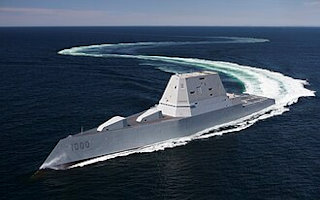Keep Sold Strategy
Secure Your Program’s Future
Winning a government contract is a significant achievement. However, maintaining that win requires a proactive Keep Sold Strategy.
After securing a contract, competitors may challenge your program’s validity, citing cost or capability concerns. Historical precedence highlights such risks. Implementing a Keep Sold Strategy helps you address these challenges effectively.
Here are some examples:

Strategic Defense Initiative (SDI): Also known as “Star Wars,” an ambitious program that aimed to develop advanced missile defense systems but faced significant technical hurdles. It was eventually scaled back significantly after initial contract awards.




Key Components of a Keep Sold Strategy
Working closely with the program team and leadership, we assist you in building out a robust keep sold campaign as your organization progresses through contract delivery. Our “Keep Sold” solution supports you in the following areas:
Stakeholder Analysis and Mapping
Our Keep Sold Strategy starts with identifying key centers of influence. This includes both individuals and organizations.
We build detailed profiles for top stakeholders. This effort includes identifying connections between decision-makers and influencers across stakeholder communities, which is foundational for effective targeting and engagement.
Our Stakeholder Analysis and Mapping solution helps you secure and sustain long-term program support. Read more about it here.
Media Analysis
We monitor media narratives about your program. Assess message volume, quality, and impact to inform your communication efforts. Although media analysis is an ongoing task, we have an efficient process that we conduct for 8 weeks.
The process includes:
- Identifying known and emergent adversaries to support targeted counter-messaging and/or preemptive messaging
- Evaluating consistency of supporter messaging to facilitate keeping supporters and allies on message across stakeholders
- Assessing volume, type, and quality of products being produced in support or opposition of the program and your company:
- A weekly news scan reflecting the most pertinent articles related to the program along with brief synopsis of the key points and issues:

Communications Plan
After assessing your goals in the context of our Stakeholder Analysis and Mapping and Media Analysis, we use the insights to:
- Create a stakeholder outreach timeline
- Select constituent-specific keep sold messages
- Develop metrics to assess the efficacy of messages and messengers
We develop select communications products (e.g., point papers, event/constituent-specific presentations, key messages) to support your key responses with relevant stakeholders, supporters, and detractors.
Benefits of Implementing a Keep Sold Strategy
- Enhances stakeholder engagement
- Mitigates risks of program cancellation
- Strengthens your program's public perception
By adopting a comprehensive Keep Sold Strategy, you ensure your program remains on track and continues to deliver value.